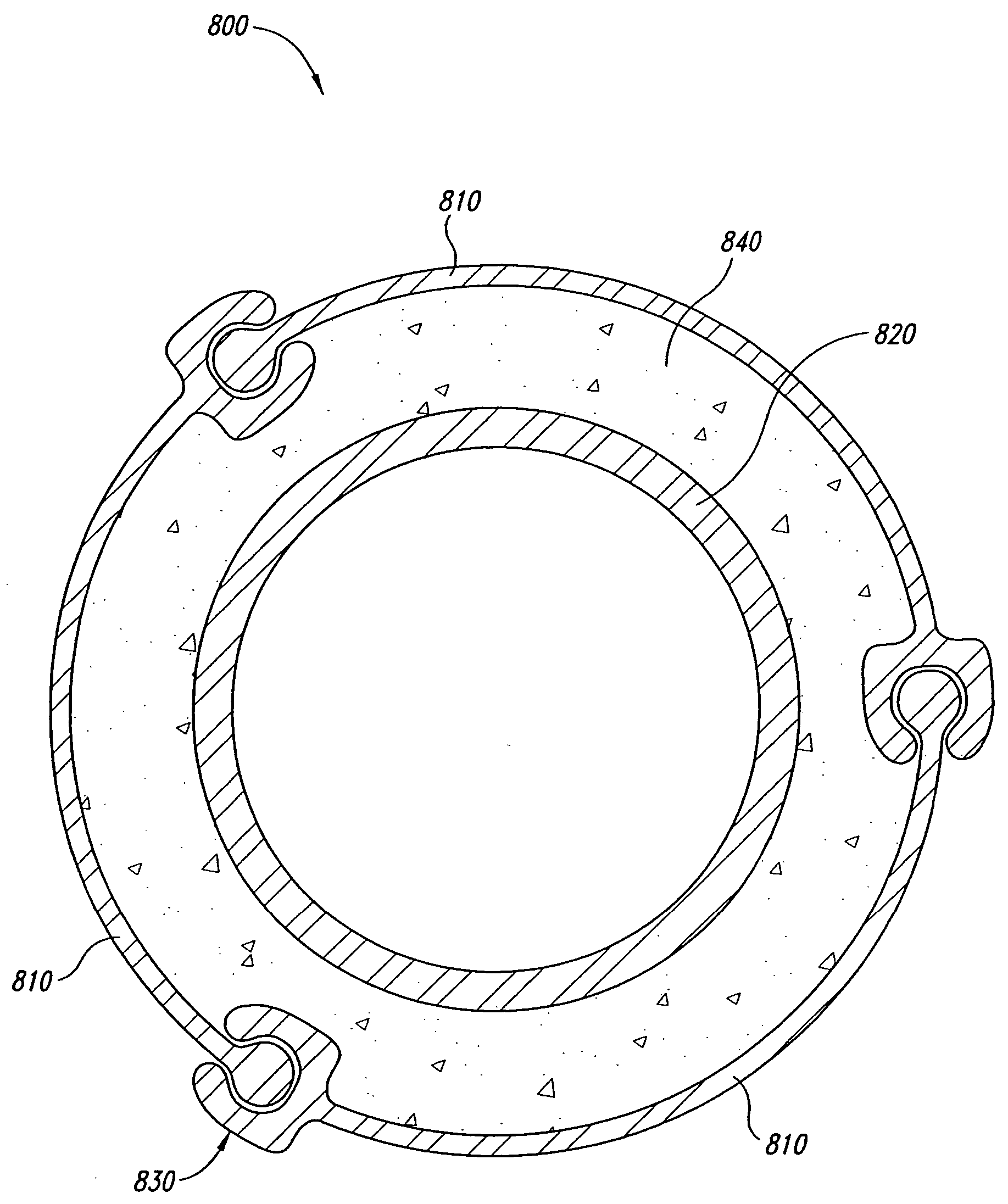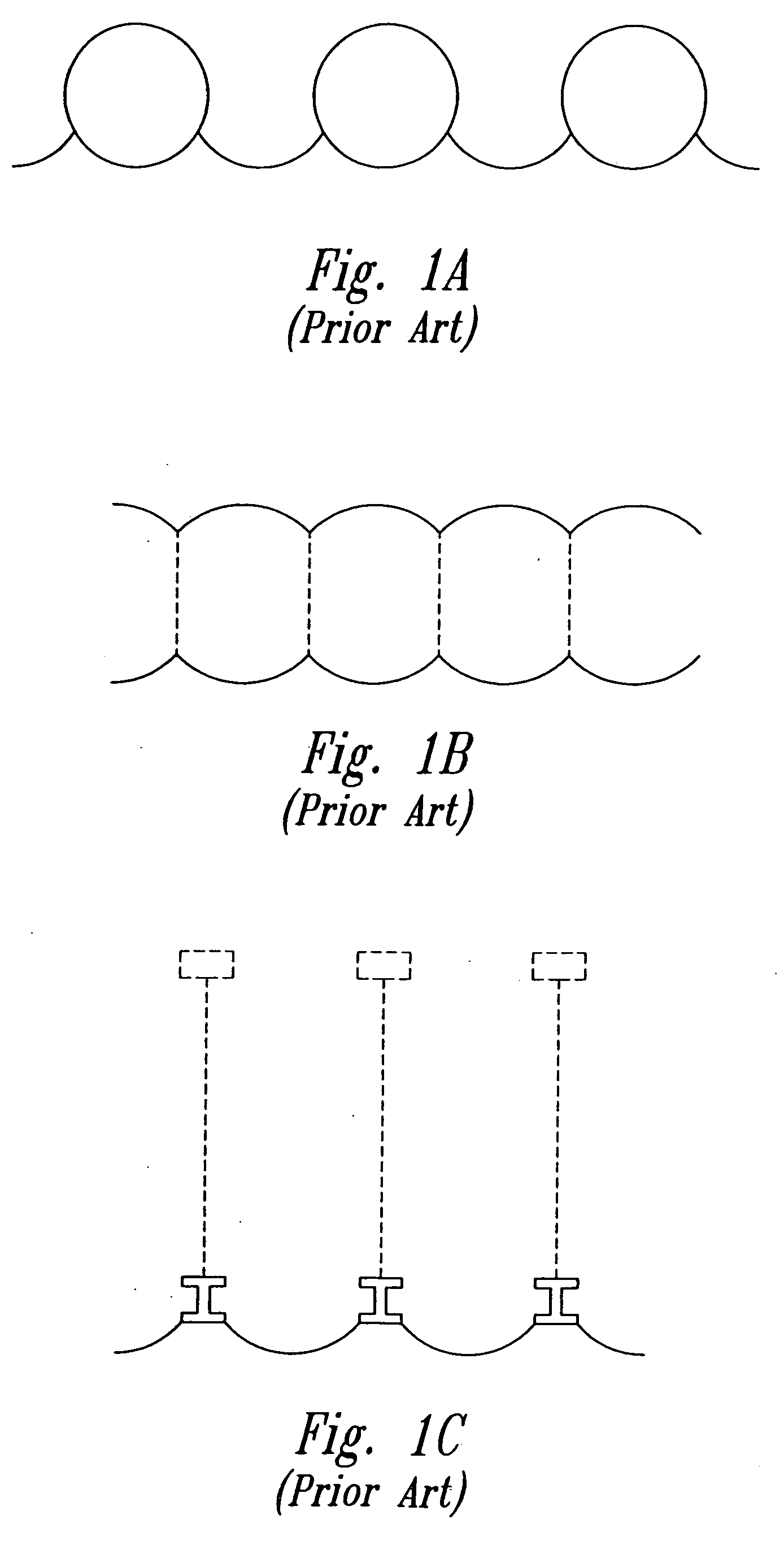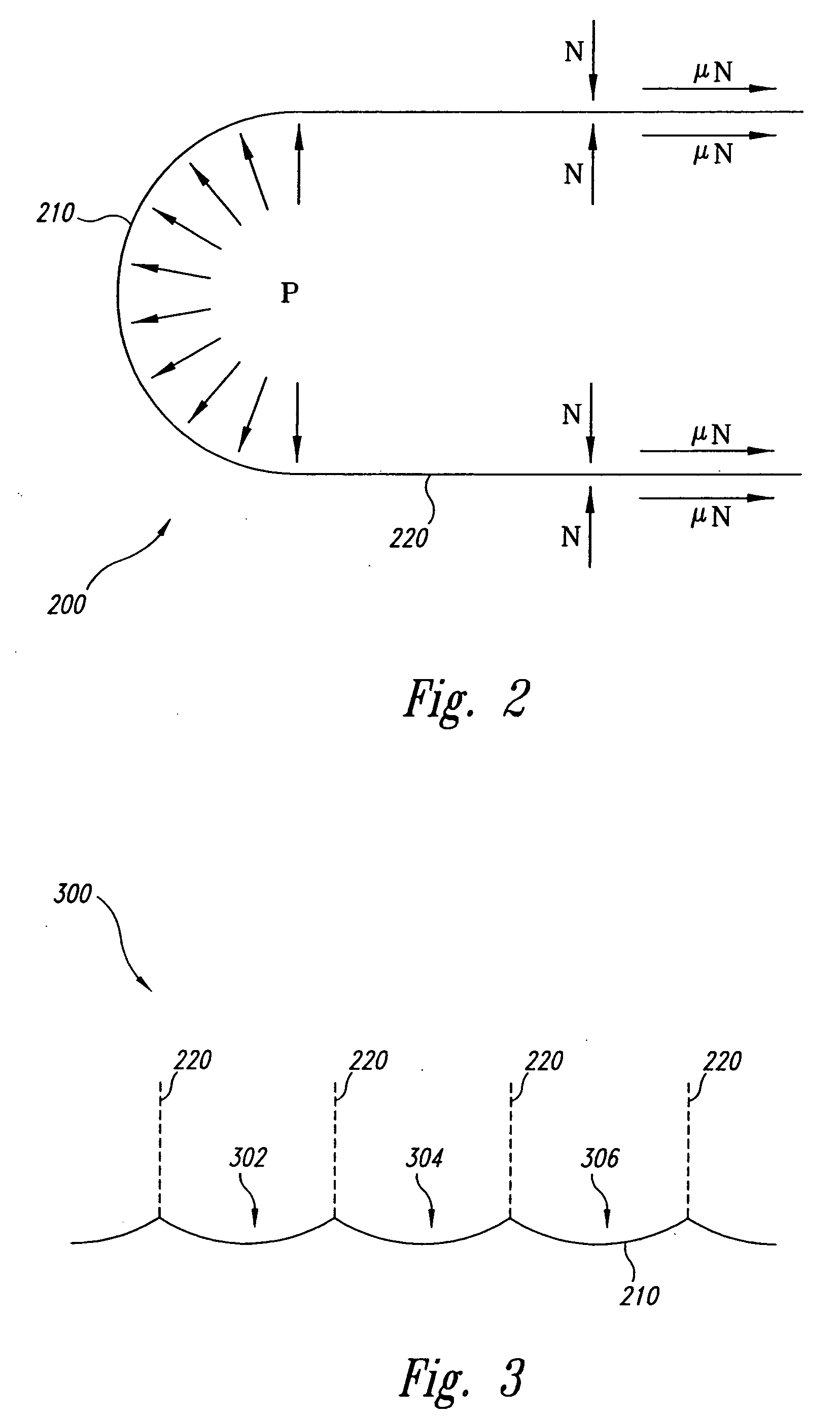Earth retaining system such as a sheet pile wall with integral soil anchors
a technology of soil anchors and sheet piles, which is applied in the field of earth retaining systems, can solve the problems of heavy live load, difficult construction, and the most severe, and achieve the effects of low maintenance, difficult and expensive maintenance, and tremendous resistance to damag
- Summary
- Abstract
- Description
- Claims
- Application Information
AI Technical Summary
Benefits of technology
Problems solved by technology
Method used
Image
Examples
example 1
[0064] Testing by: D. Nottingham [0065] C. Canfield [0066] Apparatus: A test box 2′×2′×4″ high to hold sand was constructed of plywood and pressed board. [0067] Materials: Silica sand in the sand of #30 to #70 sieve was obtained. [0068] Two end sections of PS32 sheet piles were cut to about 3″ height. [0069] Test Procedure: The silica sand was dampened and packed around the sheet pile sections. A wire was run through a hole in the box to one end of the sheets, and connected. [0070] The assembly was pulled into the sand until stress cracks formed in the sand. The test was photographed and observed as to nature and direction cracks. Test was repeated numerous times. [0071] Results: Cracks in sand did not form parallel to sheet pile sides, but did so at about 30 degree±angles emanating from sheet pile interlocks. This was a result of the interlocks acting as an integral microanchor. Soil friction against sheet pile sides did not appear to be present at time of soil cracking. This testi...
PUM
 Login to view more
Login to view more Abstract
Description
Claims
Application Information
 Login to view more
Login to view more - R&D Engineer
- R&D Manager
- IP Professional
- Industry Leading Data Capabilities
- Powerful AI technology
- Patent DNA Extraction
Browse by: Latest US Patents, China's latest patents, Technical Efficacy Thesaurus, Application Domain, Technology Topic.
© 2024 PatSnap. All rights reserved.Legal|Privacy policy|Modern Slavery Act Transparency Statement|Sitemap



